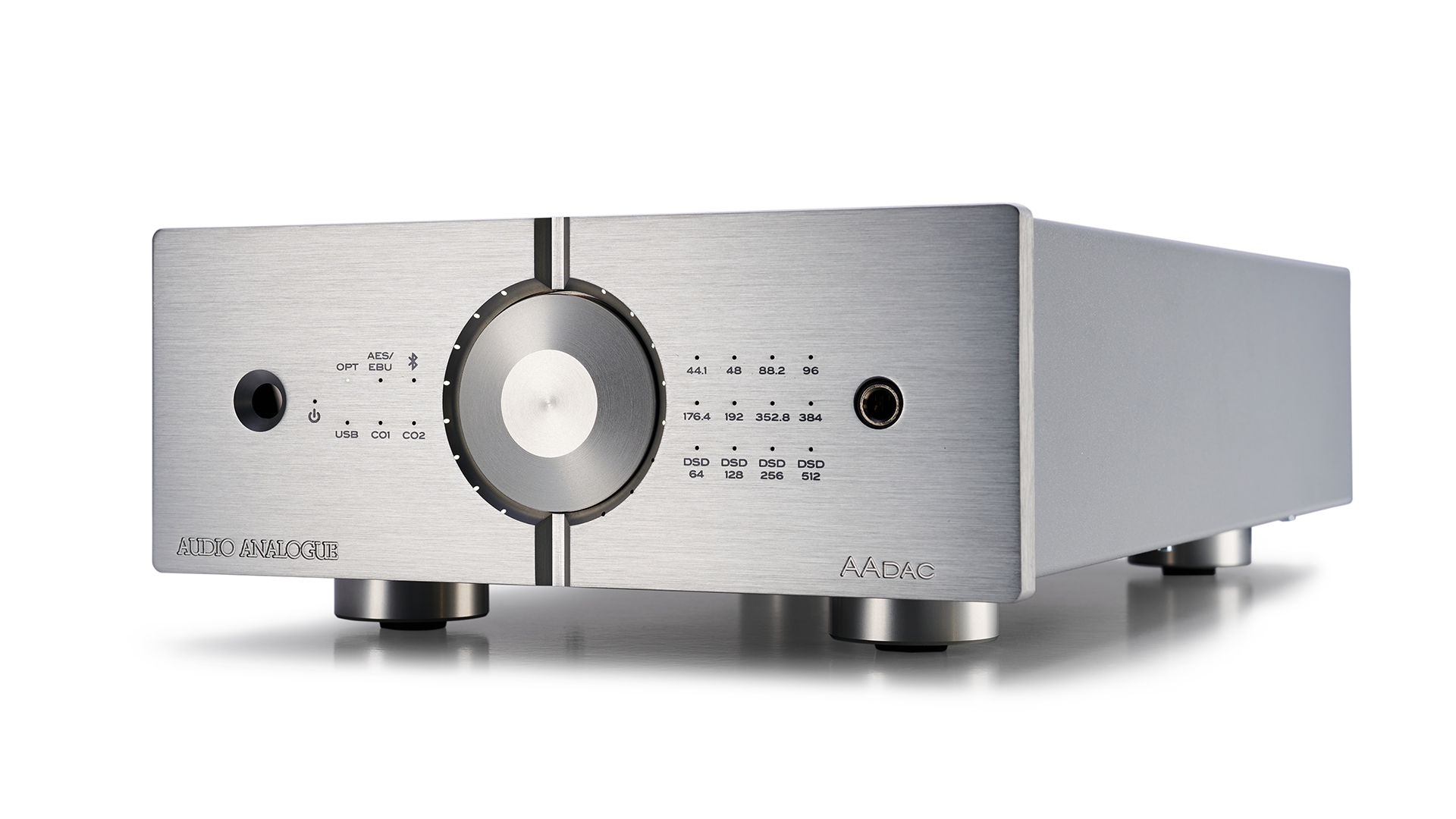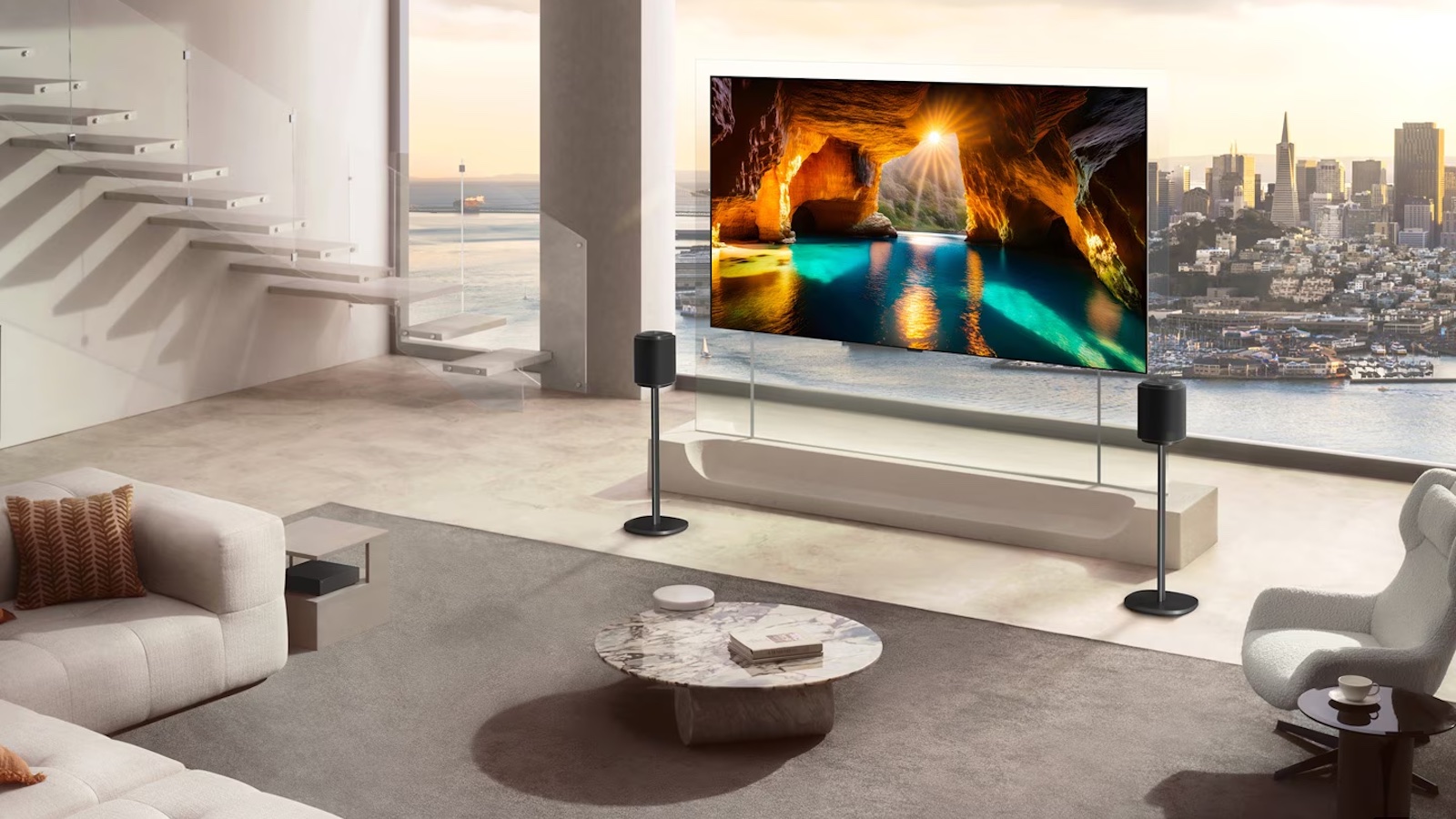What Hi-Fi? Verdict
Audio Analogue’s AAdac is sensibly specified, nicely made and a pleasure to use. Its music-first approach is hugely appealing.
Pros
- +
Full-bodied and fluid sound
- +
Expressive and articulate midrange
- +
Good when used as a digital preamp
Cons
- -
Set-up process is a little fiddly
- -
Up against some tough competition
Why you can trust What Hi-Fi?
Audio Analogue was founded in 1995, and since then has become known for producing classy, capable yet usually understated premium electronics. This Tuscany-based brand has never really had a stint in the limelight, but that doesn’t make its products any less worthy, as you’re about to find out.
While Audio Analogue has made numerous CD players and other digital products throughout its history, it’s really in amplification where the company has shone with classic analogue integrated designs such as the original entry-level Puccini and, at the other extreme, the monster 62kg Class A model coming to mind. The latter was huge with rather ungainly proportions but sounded as sweet as they come – a real high-end gem in our opinion.
Build
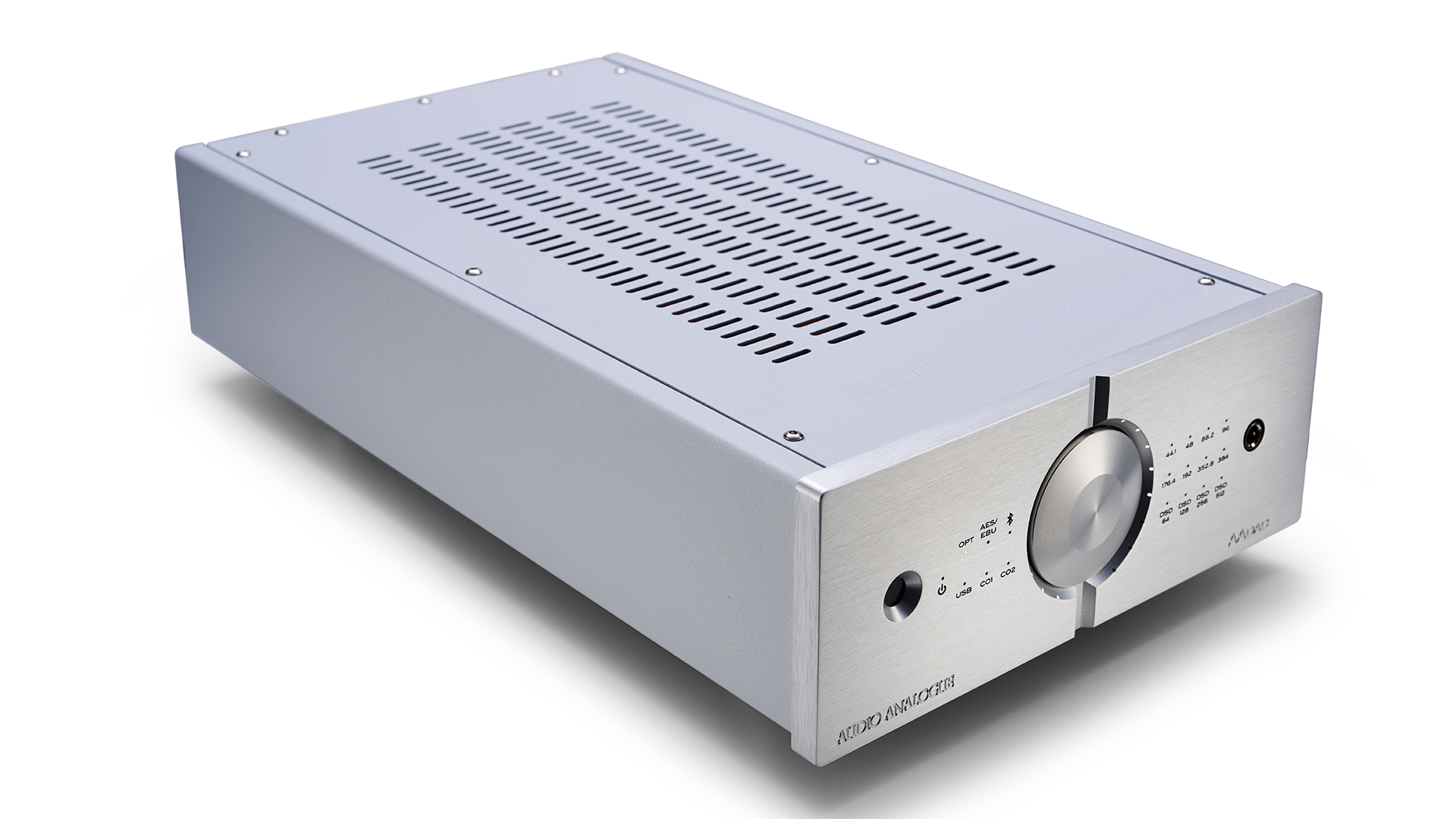
Is the new AAdac good enough to sit alongside these analogue classics? Having spent some considerable time with this DAC (digital-to-analogue converter) we certainly think so. While not revolutionary in any way, this number-cruncher is the kind of well-thought-out and hugely capable product that certainly deserves to make a mark.
Audio Analogue has got the basics right. The AAdac is a sensibly-specified unit with a good range of inputs – USB Type B, AES/EBU, an optical and a pair of coaxs – that should cover most bases as far as home hi-fi is concerned. Though not fitted to our review sample, you will be able to add an optional aptX Bluetooth module, which brings easy wireless connectivity to phones, tablets and computers, and that can only be a good thing. At the time of writing, there is no indication of price for this module.
There’s a choice of both balanced XLRs and single-ended RCAs as far as the analogue outputs are concerned, and the option of using the AAdac as a digital preamp should you want to simplify your system’s signal path. Beyond that, there’s a lovely metal remote that feels so much nicer to use than the cheap, plasticky handsets most high-end DACs are supplied with, and the remote's simplicity – there are just seven buttons – makes it a breeze to use.
Take a look inside the DAC and you’ll find an ESS Sabre ES9038 chip at its heart. This gives the AAdac great compatibility, allowing it to deal with PCM files up to 32-bit/384kHz and DSD 512. That should be more than enough to play the files that most people have in their collection.
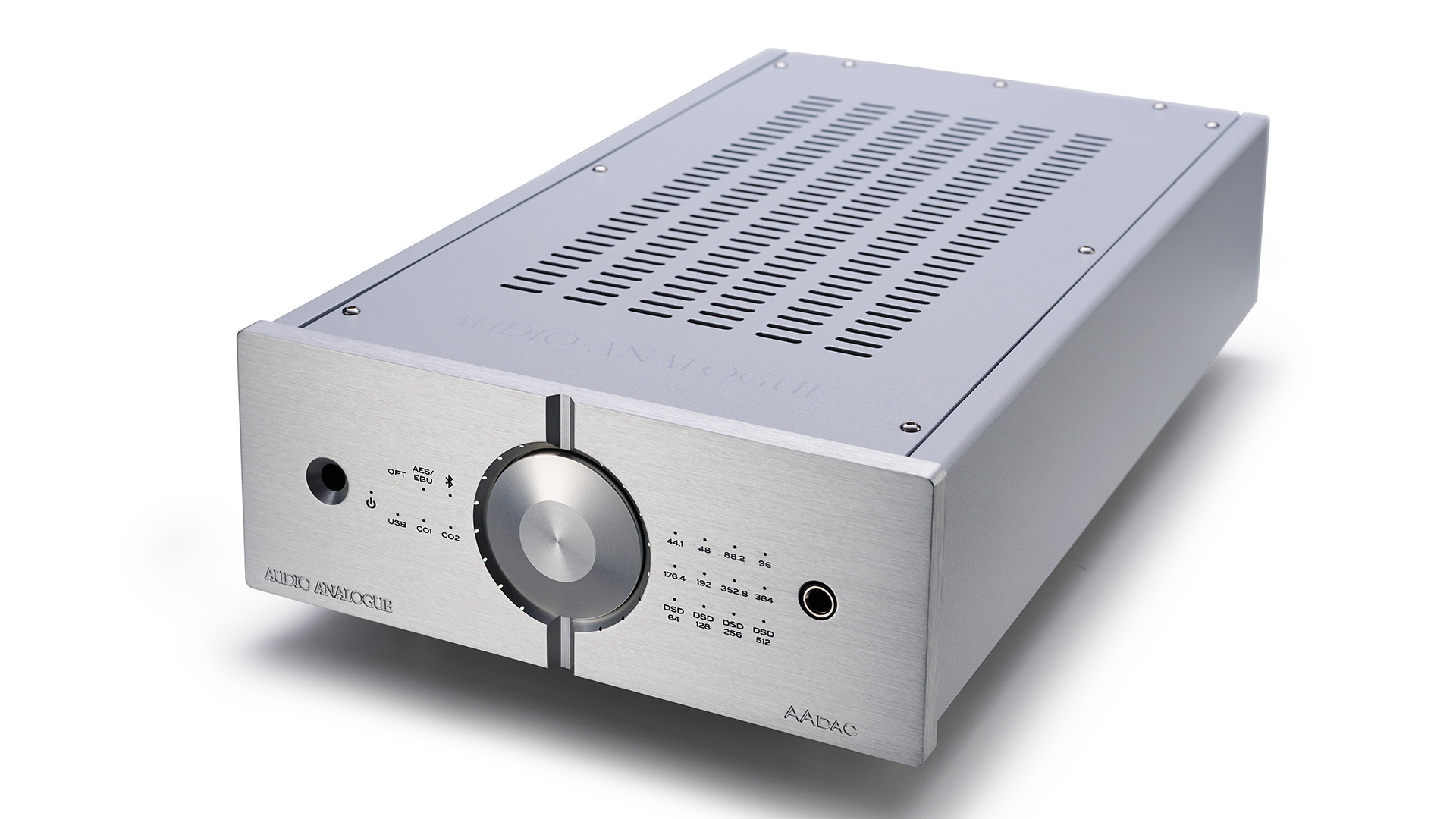
Type DAC/preamp
File compatibility PCM – 32-Bit/384kHz, DSD512
Inputs USB Type B, AES/EBU, optical, coax x 2
Bluetooth Optional (price tbc)
Outputs Balanced XLR, Single-ended RCA
Remote Yes
Headphone output Yes
The company’s experience shines through with dedicated power supplies for the digital and analogue sections of the circuitry and the use of separate boards for each stage, reducing the risk of unwanted interactions spoiling the sound. The analogue output stage is a fully-balanced design (making those balanced XLR output terminals the connection of choice) and is claimed to be packed with high grade components.
The latest hi-fi, home cinema and tech news, reviews, buying advice and deals, direct to your inbox.
We’ve long admired Audio Analogue for the build of its products and this one reinforces our faith. The AAdac is a neat, slim but deep unit that’s been built with obvious care. The casework panels are nicely finished and the whole thing feels like a quality product.
We wish the company had made the initial set-up a little less clumsy, though. While we have no issue with a lack of a proper display during use – the various LEDs on the front panel make things clear enough – the lack of one does mean that we have to rely on those same LEDs working in combination to inform us about secondary functions such as balance or which one of the seven filter settings is chosen. It’s not difficult to figure out if you’ve got the manual handy, but the process should be slicker.
Sound
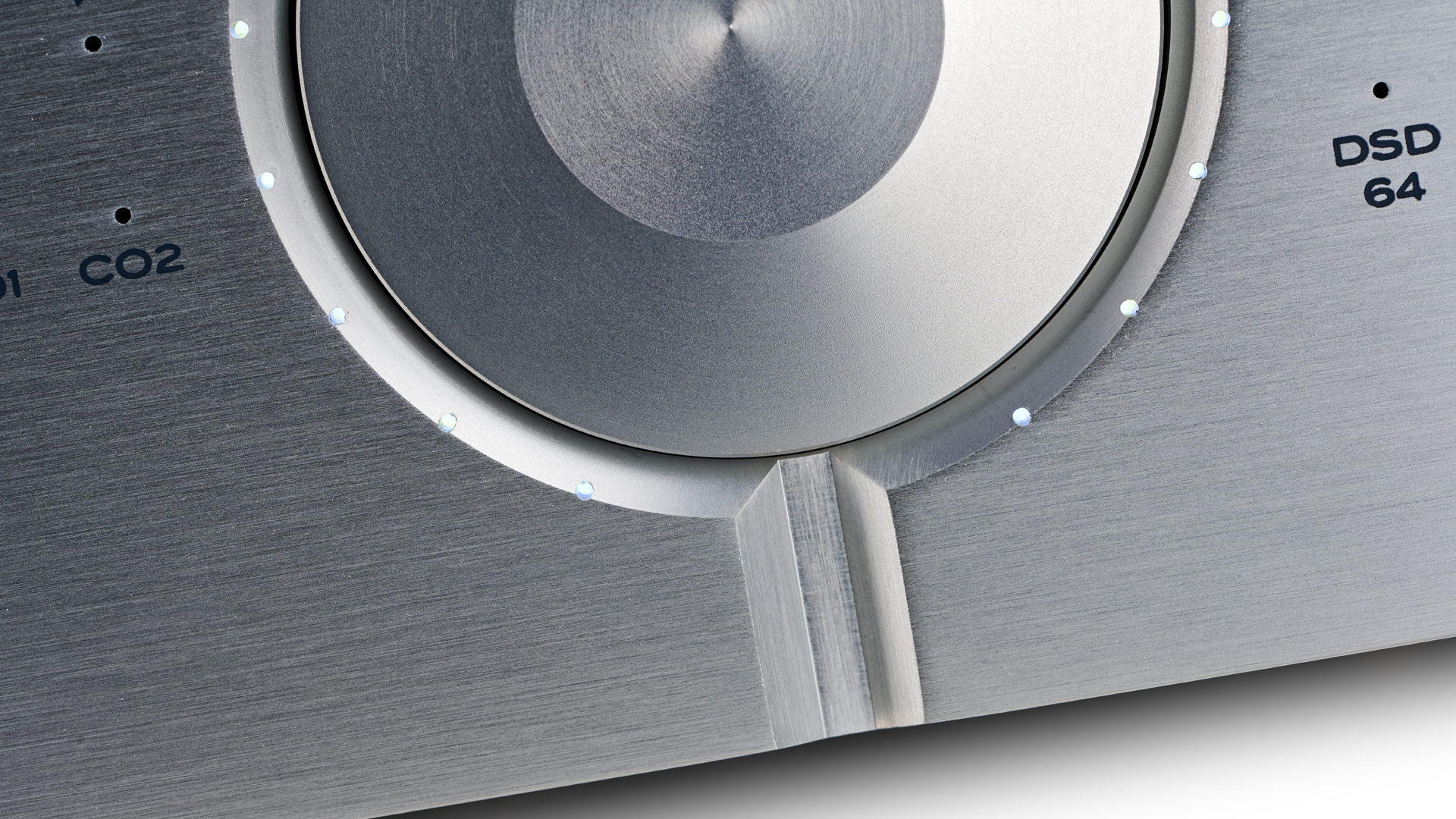
A DAC at this level needs a top class system to shine, so we use our usual Naim ND555/ 555 PS DR music streamer as a digital source alongside a MacBook loaded with Audirvana music-playing software and a hard-drive full of high-res and CD-res music. The rest of the system is Burmester’s 088/911 Mk III pre/power driving a pair of ATC SCM 50s. We also plug in Naim’s SuperNait 3 and Mission’s resurrected 770 speakers to see how the Audio Analogue copes in more price-compatible set-ups. The DAC’s headphone output is connected to both Focal’s closed-back Stellia and Grado’s open-back RS-1s. The AAdac has no issue driving either.
We start off by putting the AAdac in DAC mode where the output level is fixed and all of the preamp functionality is bypassed. This is the mode to use if you’re connecting it straight into a conventional integrated amplifier or pre/power combination. After listening to all seven of the digital filters we settle on the default option (Linear phase, slow roll-off) as it seems the most natural to our ears. Having said that, the sonic differences between the various filters can be small and the choice comes down to taste and partnering system rather than absolute ability.
Given a few days of use, the AAdac’s presentation opens up but the overall character of the product doesn’t shift significantly. And that character is a hugely appealing one that puts the focus solely on the music rather than the mechanics of hi-fi reproduction.
Let’s be clear, if you’re looking for the last word in insight, Chord's excellent TT2 (£4250/$5995/AU$8500) sets the standard at this level in our opinion. Little we’ve heard can match the TT2 when it comes to digging deep into the fabric of a recording, and that includes this Audio Analogue. But that isn’t the whole story. While the AAdac isn’t quite as revealing, it does have an unusually appealing way of presenting music that keeps us listening for hours on end.
Here’s a digital product that sounds smooth and refined but avoids sapping the life out of a recording. It’s a comfortable sound, certainly, yet listen to something like Lenny Kravitz’s Are You Gonna Go My Way and it’s hard to complain about a lack of bite or rhythmic drive. Audio Analogue have managed a difficult balancing act that most fail at.
Then we get to that lovely midrange performance. It’s full-bodied yet not overtly rich sounding, giving Kravitz’s vocals convincing texture and palpability. This is an articulate sound that works just as effectively when we switch genres to Whitney Houston’s All At Once. Here the AAdac gives us nuance and agility, highlighting Houston’s enviable ability yet never sounding aggressive when the singer hits those highs hard. As well as being able to track all the vocal gymnastics we also get the natural warmth and passion in Houston’s voice, which has us sitting back in admiration.

We switch to Holst’s Planet Suite and enjoy the way this DAC sets out the soundstage. It doesn’t necessarily deliver the most expansive stereo imaging we’ve heard but the results are precise, stable and nicely layered. The music’s large-scale dynamic shifts are conveyed with authority while low level subtleties come through with clarity.
There remains a good amount of detail on show here, and it’s organised in a composed and musical way. We can choose to concentrate on specific parts of the orchestra or sit back and just enjoy the experience. The AAdac allows us to do both with its pleasing combination of authority and finesse.
Our next step is to use the Audio Analogue as a preamp, and it does its job superbly. Usually, when we do this with products the result is a bit of a disappointment. While the removal of a dedicated preamp such as our Burmester 088 should on paper result in a better sound due to the simpler signal path it rarely works that way. We normally get a small increase in detail but also significant losses in drive, dynamics and overall authority. That doesn’t happen here, with the AAdac delivering a lovely, rounded and entertaining sound. While a preamp of the quality of the Burmester – almost five times the price of the AAdac – still produces a better overall sound when included in our system, we think the Audio Analogue’s preamp section will more than hold its own in more price compatible set-ups.
Have you noticed that we haven’t mentioned the difference in performance between the various digital inputs or the way the various sampling rates and formats sound? We haven’t had to, as the AAdac is reassuringly consistent regardless of how it is connected. This speaks to careful and consistent engineering on Audio Analogue’s part.
The story is equally positive when we try the headphone output. It isn’t uncommon to find that headphone outputs on devices such as this are a bit of a disappointment, as the design has been treated like a tick-box exercise rather than something serious. That’s not the case here with the headphone output matching the line stage's quality and character to a tee.
Verdict
The AAdac is a charmer. It’s up against some tough competition but has a balance of qualities that’s hugely appealing. Add the lovely sound to the carefully considered features and elegant build, and the only conclusion is that this is one product that deserves serious consideration. It may not be the obvious choice at this price level but that doesn’t mean it won’t be the correct one in the right context.
SCORES
- Sound 5
- Build 5
- Features 5
MORE:
Read our Chord Hugo TT2 review
Here's our pick of the best DACs you can buy
How to build the perfect hi-fi system
What Hi-Fi?, founded in 1976, is the world's leading independent guide to buying and owning hi-fi and home entertainment products. Our comprehensive tests help you buy the very best for your money, with our advice sections giving you step-by-step information on how to get even more from your music and movies. Everything is tested by our dedicated team of in-house reviewers in our custom-built test rooms in London, Reading and Bath. Our coveted five-star rating and Awards are recognised all over the world as the ultimate seal of approval, so you can buy with absolute confidence.
